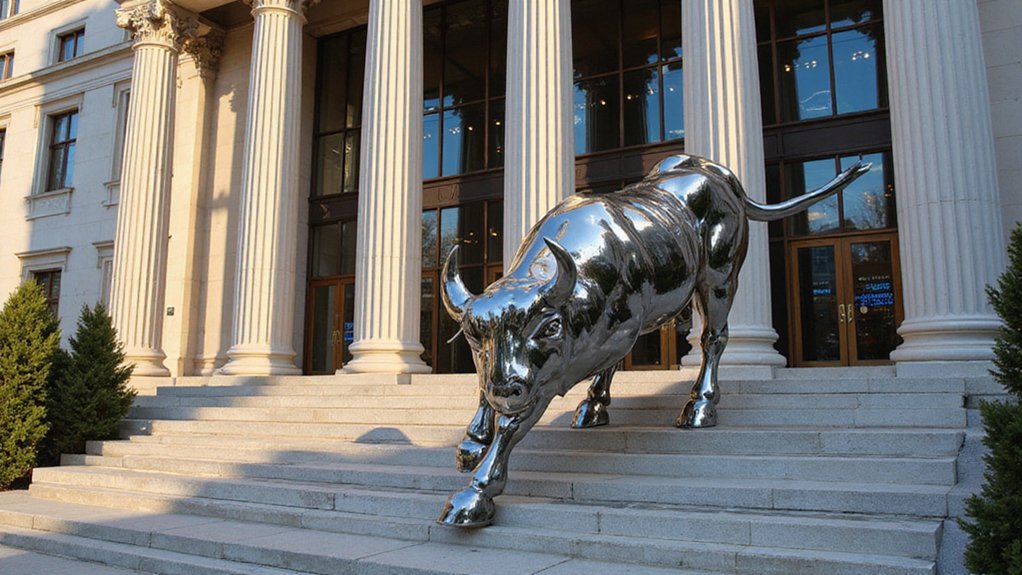While the cryptocurrency sector has weathered numerous boom-bust cycles that would make seasoned Wall Street veterans reach for antacids, Bullish’s $1.11 billion IPO in 2025 represents something of a watershed moment—the kind of institutional validation that transforms a speculative asset class into, well, a slightly more respectable speculative asset class.
The offering, priced between $32-37 per share and oversubscribed by more than 20 times, valued the exchange near $5.4 billion while generating the sort of investor frenzy typically reserved for revolutionary pizza delivery apps.
BlackRock and ARK Investment Management‘s $200 million commitments each signal a tectonic shift in institutional appetite. When the world’s largest asset manager writes nine-figure checks for crypto exposure, it suggests digital assets have evolved beyond internet funny money into legitimate portfolio diversification tools (or at least sophisticated gambling instruments with regulatory blessing).
The regulatory landscape has undergone remarkable transformation, with the U.S. Genius Act providing long-awaited clarity and President Trump’s administration embracing stablecoin frameworks. This newfound regulatory coherence has emboldened institutional investors who previously treated cryptocurrency like radioactive waste wrapped in legal uncertainty. Platforms like the Kaanch Exchange are demonstrating how regulatory compliance can be maintained while offering competitive yields, positioning themselves to challenge traditional finance systems.
Bullish’s timing proves impeccable, coinciding with a broader crypto IPO renaissance. Circle’s June debut delivered a sevenfold share price surge, while companies including eToro, Galaxy Digital, and Gemini queue for public offerings.
The exchange’s compliance-first approach, backed by former NYSE president Tom Farley and billionaire Peter Thiel, positions it strategically against less regulated competitors operating in murkier jurisdictions. The platform has processed over $1.25 trillion in trading volume as of March 31, demonstrating significant institutional traction.
The company’s NYSE listing under ticker ‘FLY’ (perhaps optimistically named) reflects crypto’s infrastructure maturation. Bullish’s acquisition of CoinDesk adds market intelligence capabilities while its focus on institutional clients differentiates it from retail-heavy competitors like Binance. Meanwhile, Chainlink’s partnership with Intercontinental Exchange expands blockchain applications in traditional finance infrastructure.
Economic headwinds provide additional context: anticipated Federal Reserve rate cuts and an 11% dollar decline in early 2025 create conditions favoring alternative assets.
Converting IPO proceeds into dollar-backed stablecoins demonstrates Bullish’s commitment to bridging traditional finance with blockchain technology.
This institutional surge represents crypto’s evolution from libertarian fever dream to Wall Street reality—though whether that constitutes progress remains deliciously debatable.







